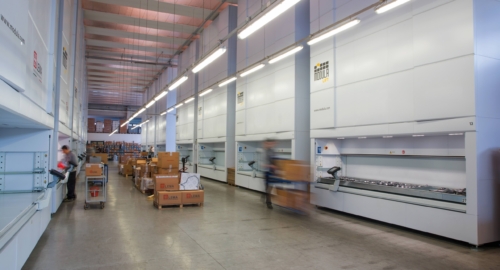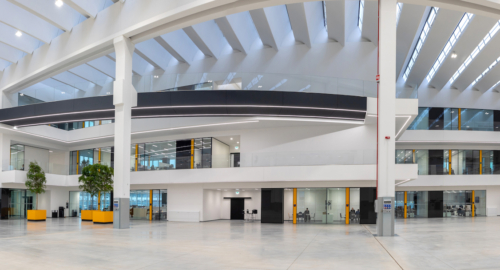Picking: what is it and why is it important to know how to use it correctly?
Every time we talk about how to use company logistics, we always disagree on how to improve the picking phase. But exactly what is picking?
Picking is the company activity that involves picking goods off shelves, from pallets or more simply, from the areas dedicated to material storage. It is a very important procedure not just for companies that operate in the distribution or e-commerce sector, but for all kinds of companies that use a warehouse in the production flow itself.
A warehouse that uses incorrect storage logistics, methods out of step with the times, and uninformed staff will always find itself fighting off time-wasting, resources and money. Reasoning along with a view to lean production, therefore, trying to reduce waste, we can intervene effectively in many ways to improve the picking phase in the warehouse.
Efficient picking is synonymous with:
- Preparing orders rapidly so deliveries are faster
- Fewer errors in the picking phase and thus a reduction in reverse logistics
- Less time spent looking for an item and more time to dedicate to the packaging phase
- Less impact on warehouse costs
- More end client satisfaction in terms of fast deliveries and the right material
How to use picking efficiently in an automatic warehouse
Improving the picking process reduces a warehouse’s costs drastically. But how can we do this? There are little things we notice that can apply right away, others instead require a broader warehouse redesign strategy.
Below we show you a few suggestions to better use the automatic warehouse:
MAP THE WAREHOUS
First of all, we need to understand how to arrange the merchandise, finding a modus operandi that is clear to all workers.
We can use codes and order the items sequentially, or we can use the logistics family so as to arrange all the large items together, subdivided according to the type of merchandise, to how often it is picked or we can even differentiate them according to the end use (supplier or client?).
Our advice is to maintain a fixed placement and not change it frequently so we create memory and routine.
MAKE ACCESS TO THE MERCHANDISE EASY
Picking time should be reduced as much as possible, and the only way to do this is to be able to access the goods more easily. There are automated solutions available that exploit the goods to man concept, bringing the requested goods directly near the worker’s station, as do vertical automatic warehouses.
In the case of warehouses with shelving, the correct procedure is to position the high rotation goods lower and the lower rotation ones in the upper shelves. This way, use of ladders, mezzanines, and forklifts is reduced.
ENTRUST YOUR INVENTORY TO WMS SOFTWARE
In order to not run into back order, meaning the you cannot process orders because the item is not in stock, you need to rely on an IT system that guarantees correct alignment between the theoretical and the real stock. The WMS software allows such alignment perfectly because it communicates directly with company management and functions not just with automatic but also manual warehouses.
REPLENISH THE MERCHANDISE
This is a picking support activity that, if not done or done at the wrong time, can cause many delays. We go back to the WMS logistics: what do I have to replenish? Where do I get it? How do I get the alert? Who do I tell that replenishment was handled?
Overall picking or by item: which should I choose?
The question that pops up these days is: which is better, “item picking” or “massive picking”?
There is no guideline case, it is all quite subjective and depends on an analysis of the product’s seasonality, flows and the available IT resources. It always depends on data, above and beyond guessing.
The best solution is usually hybrid: designed to balance the delivery level of service the client requires and their company’s financial and organisational needs. Unless we’re talking about a single-product company, we advise relying on logistical expertise to find the best solution. One thing for sure: the more automated and warehouse software-controlled the material picking phase is, the more efficient the picking. This is why many companies have decided to rely on automatic warehouses.
Modula: the automatic vertical warehouse for a version 4.0 company
The suggestions above can be summarised in a single product: the Modula automatic vertical warehouse.
Often these solutions are ignored because they are considered too expensive, but a study into industry 4.0 perspective highlights how much waste is avoided by using the Modula tray warehouse.
Apart from avoiding a lot of waste, this innovative technology lets you:
GAIN SPACE AND SAVE TIME
A Modula automatic warehouse can reach as high as 16 metres for 90,000 kg gross payload, thus saving 90% surface space. The goods-to-man principle underlying this technology also allows the operator to do other jobs while waiting for the tray in the bay (for example packaging the order).
MANAGE STOCKS BETTER
Modula WMS is a warehouse management software that dialogues perfectly with any company management system. Tracking incoming and outgoing merchandise, providing an inventory that is always up to date. It also alerts when an item in stock is about to end, facilitating merchandise replenishment and thus speeding up picking.
INCREASED MERCHANDISE SECURITY
A Modula automatic vertical warehouse makes recognition systems available with RFID readers or simply with logins and passwords that allow access to authorised personnel only. You can safeguard the entire warehouse or just specific trays.
CONFIGURE THE WAREHOUSE: INTERNAL, EXTERNAL BAY WITH DUAL DELIVERY LEVEL
Unit height, payload, sizes, options: it can all be configured with a Modula automatic warehouse. You can also select the kind of bay operator: the internal bay for small scale areas, the external bay if you need to improve ergonomics and use overhead cranes or mechanical manipulators to lift heavy items or dual delivery level to reduce operator downtime.
Choosing a Modula automatic warehouse for fast, efficient picking
The main advantage for using Modula automatic warehouses is the very fast, precise picking compared to other solutions on the market. This can also be done thanks to the additional options that provide a visual indication of where the required item is inside the tray:
LASER POINTER
The laser pointer highlights the product to remove with a green ray and communicates it directly to the Modula WMS software, which shows the exact position to indicate with the laser.
SIMPLE OR ALPHANUMERICAL LED BAR
The LED BAR is located in the upper part of the operator’s bay, and it lights up in segments indicating the tray section involved in the picking operation. It can also provide additional information in its advanced (alphanumerical) version.
PUT TO LIGHT: the efficiency of a Modula automatic vertical warehouse when sorting merchandise
In order to speed up picking, Modula has designed a solution to preparing orders quickly and error-free: the PUT TO LIGHT.
With this method, you can process several lines of orders at the same time, equipping as many locations as there are orders to fill. The PUT TO LIGHT is made up of one or more 3 metre bars that cover the entire length of the location and feed the display. These displays have 3 colours (yellow, red and green), each of which corresponds to a specific Modula vertical warehouse. The displays show how many parts to pick, and there is a key that lets you confirm deposit or vary the amount effectively deposited. In this case too, Modula WMS is the system’s trusted ally, because it decides the depositing order and guides the operator.
Having an automatic warehouse with intelligent software means having error-free picking, efficient logistics and an innovative company.
Want to know more?



